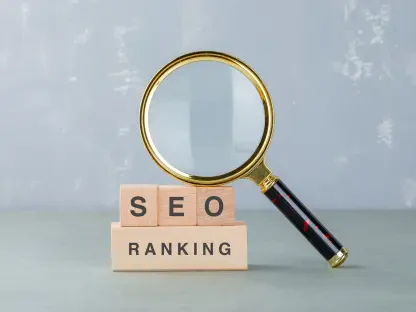Imagine a world where marketing campaigns are crafted in hours instead of weeks, where every customer interaction feels uniquely tailored, and where brands achieve unprecedented engagement with minimal manual effort. This isn’t a distant dream but a reality powered by generative AI, a technology that is redefining the marketing landscape in 2025. As businesses race to keep up with digital transformation, generative AI emerges as a game-changer, automating content creation and personalizing experiences at scale. This review dives deep into the capabilities, real-world impact, and challenges of this transformative tool, offering a comprehensive look at how it is shaping modern marketing strategies.
Understanding Generative AI in Marketing
Generative AI refers to machine learning models that can produce original content—be it text, images, or videos—based on vast datasets and user inputs. Unlike traditional AI, which primarily analyzes or predicts, this technology creates, making it a powerful asset for marketers seeking efficiency and innovation. Its ability to generate ad copy, design visuals, or even simulate customer interactions has shifted it from an experimental concept to a cornerstone of digital marketing.
The rise of generative AI aligns seamlessly with broader tech trends like data-driven decision-making and automation. Marketers now leverage this tool to streamline workflows, reduce costs, and deliver content that resonates with target audiences. Its integration into marketing ecosystems highlights a pivotal shift toward agility, enabling brands to respond swiftly to market demands and consumer preferences.
Key Features and Performance Analysis
Content Automation and Speed
One of the standout features of generative AI lies in its capacity to automate content creation, slashing the time required for campaign development. Tools like ChatGPT and DALL-E empower marketers to produce social media posts, ad scripts, and visual designs almost instantly. This automation is not just about speed but also about scalability, allowing teams to handle multiple campaigns simultaneously without sacrificing quality.
Real-world metrics underscore this impact, with major brands reporting significant gains. For instance, a prominent beverage company achieved a 20% increase in campaign rollout speed by integrating AI-generated content into its processes. Such efficiency translates into faster time-to-market, a critical advantage in today’s fast-paced digital environment where trends shift overnight.
The precision of these tools further enhances their value. By learning from existing brand guidelines and past content, generative AI ensures consistency while minimizing human error. However, the technology still requires oversight to avoid generic outputs that might fail to capture a brand’s unique voice or vision.
Hyperpersonalization for Enhanced Engagement
Beyond automation, generative AI excels in delivering hyperpersonalized customer experiences, a capability that is reshaping engagement metrics. By analyzing real-time data, the technology crafts tailored content such as personalized video ads or customized email campaigns that speak directly to individual preferences. This level of customization fosters deeper connections between brands and consumers.
Industry reports highlight the tangible benefits of this approach, with studies showing up to a 15% increase in conversion rates when hyperpersonalization is applied effectively. The ability to adapt messaging on the fly based on user behavior or demographic insights positions generative AI as a vital tool for boosting customer loyalty and driving sales.
Yet, the success of personalization hinges on data quality and ethical usage. Marketers must navigate the fine line between customization and intrusion, ensuring that AI-driven interactions enhance rather than alienate the customer experience. When executed with care, this feature transforms casual browsers into committed buyers.
Real-World Impact and Applications
Generative AI is no longer confined to theory; its practical applications span diverse industries, delivering measurable outcomes. Leading sportswear brands have harnessed AI to automate email campaigns, resulting in a 30% surge in open rates by tailoring messages to individual user interests. Such success stories illustrate the technology’s potential to amplify traditional marketing efforts.
Innovative use cases further showcase its versatility. Startups employ AI to simulate focus group dynamics, gaining consumer insights 40% faster than conventional methods, while e-commerce platforms use dynamic ad content to adjust visuals and copy based on browsing patterns. These applications highlight how generative AI adapts to varying business needs, from ideation to execution.
The ripple effect on business operations is profound, with enhanced productivity and cost savings becoming evident. By reducing reliance on manual processes, companies can redirect resources toward strategy and innovation, positioning themselves as agile competitors in crowded markets. This practical integration marks a turning point for marketing efficiency.
Challenges and Areas for Improvement
Despite its promise, generative AI is not without hurdles that can impede its effectiveness. Technical issues, such as inaccurate outputs or “hallucinations,” pose risks to campaign integrity, potentially leading to messaging that misses the mark or misrepresents a brand. These limitations necessitate robust quality checks to maintain credibility.
Regulatory and ethical concerns also loom large, with data privacy and algorithmic bias emerging as critical issues. Academic perspectives emphasize the need for transparency in how customer information is used, warning against unintended discrimination in AI outputs. Marketers must prioritize compliance with evolving laws to avoid reputational damage and legal pitfalls.
Additionally, there’s a growing concern about over-reliance on data-driven approaches at the expense of human creativity. While generative AI excels in efficiency, it can sometimes produce content lacking the emotional depth or originality that human input provides. Striking a balance between automation and authenticity remains an ongoing challenge for the industry.
Looking Ahead
Reflecting on this exploration of generative AI in marketing, it’s clear that the technology stands as a transformative force, offering unparalleled automation and personalization capabilities. Its ability to accelerate content creation and enhance customer engagement redefines operational benchmarks for brands willing to embrace it. The success stories and performance metrics bear testament to its value in driving efficiency and measurable results.
Challenges like technical inaccuracies and ethical dilemmas, however, underscore the need for cautious adoption during its integration phase. Moving forward, marketers should focus on building robust governance frameworks to address privacy and bias concerns while investing in training to ensure human oversight complements AI outputs. Starting with small-scale initiatives, such as AI-driven A/B testing, can help refine strategies before broader deployment.
The future of marketing with generative AI also calls for synergy with emerging technologies like the Internet of Things and blockchain to unlock new possibilities in data integration and security. By prioritizing iterative improvements and cross-functional collaboration over the coming years, brands can transform this tool into a sustainable competitive edge. This balanced approach promises to elevate marketing into a realm of innovation and accountability.









